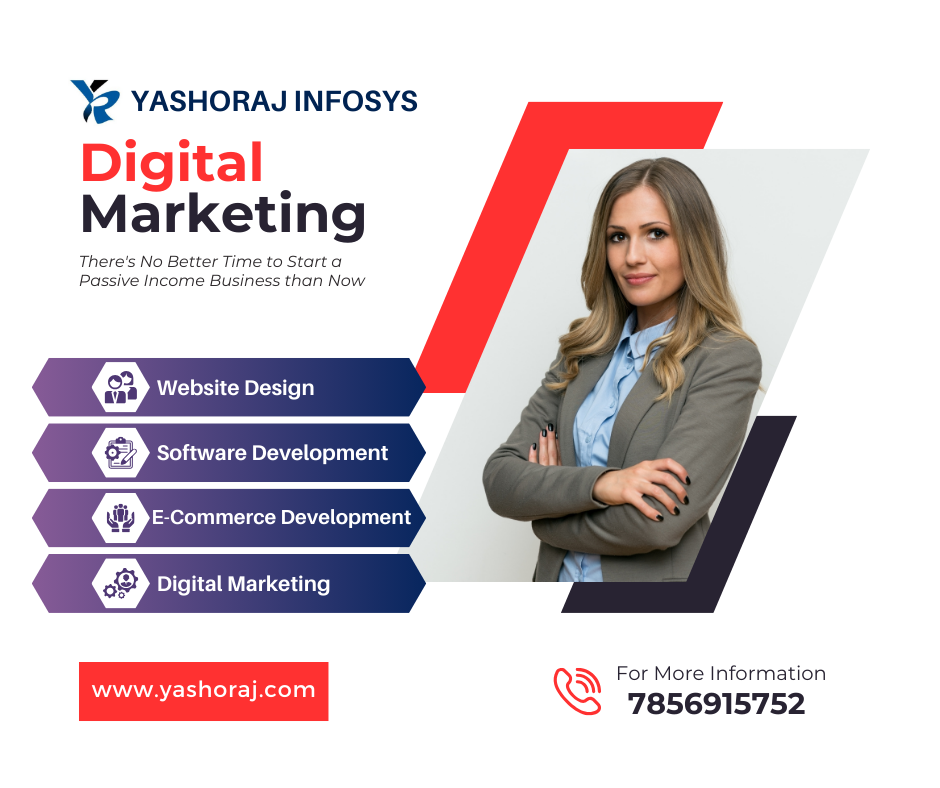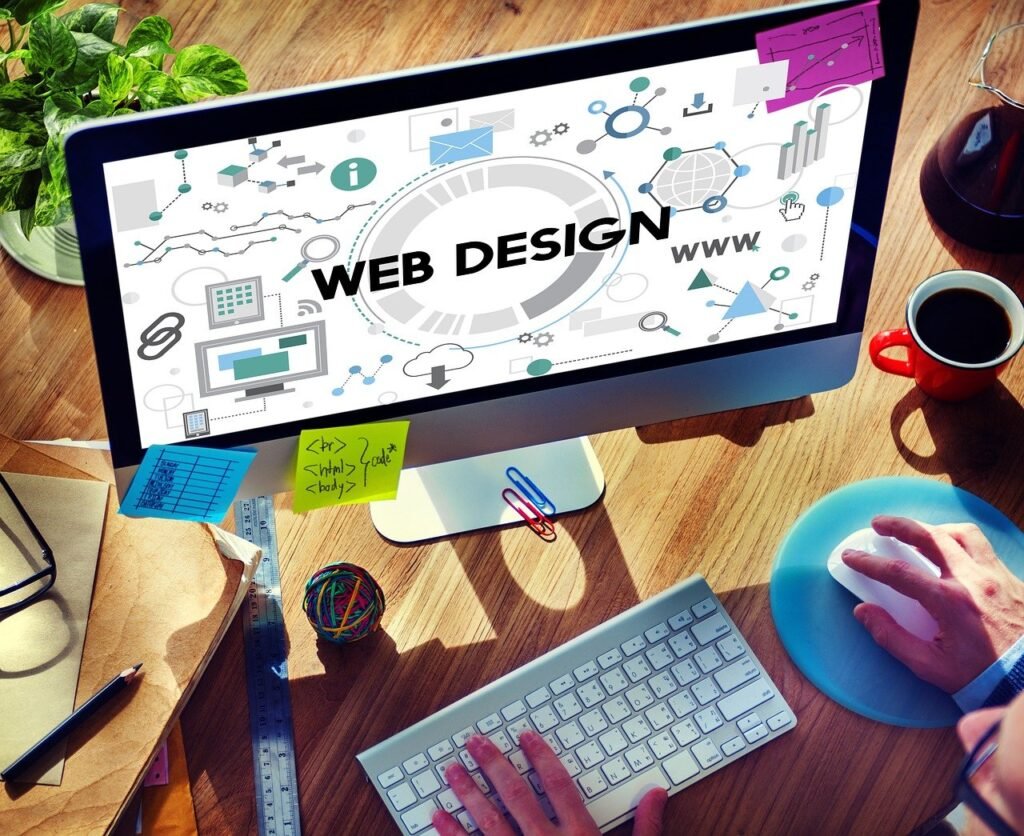In the ever-evolving world of web design, staying current with the latest trends is crucial for creating websites that are not only visually appealing but also functional and user-friendly. As we move into 2024, several key trends are emerging that promise to shape the landscape of web design. Whether you’re a seasoned designer or just starting out, understanding these trends will help you stay ahead of the curve and create cutting-edge websites that captivate your audience. Here are the top 10 web design trends for 2024.
1. Dark Mode Design
Dark mode has been gaining popularity over the past few years, and it’s set to become even more prevalent in 2024. This design trend involves using darker color schemes, which not only provide a sleek and modern look but also reduce eye strain for users. Many major platforms, such as Facebook, Twitter, and Instagram, offer dark mode options, and websites are following suit. Dark mode can also improve battery life on OLED screens, making it a practical choice for mobile users.
Benefits:
- Reduced eye strain in low-light environments
- Improved battery life on OLED screens
- Modern and stylish aesthetic
Implementation Tips:
- Ensure sufficient contrast between text and background
- Use accent colors to highlight important elements
- Provide an option for users to switch between light and dark modes
2. Minimalist Design
Minimalism continues to be a dominant trend in web design. This approach emphasizes simplicity, clean lines, and a focus on essential elements. By reducing clutter and eliminating unnecessary components, minimalist design creates a more intuitive and enjoyable user experience. It also helps to improve website performance by reducing load times.
Benefits:
- Enhanced user experience through simplicity
- Faster load times and improved performance
- Greater focus on content and key messages
Implementation Tips:
- Use ample white space to create a clean layout
- Limit the use of colors and stick to a cohesive palette
- Focus on essential elements and remove any unnecessary components
3. Micro-Interactions
Micro-interactions are small, subtle animations or design elements that provide feedback to users as they interact with a website. These can include hover effects, button animations, and loading indicators. Micro-interactions enhance user experience by making interactions feel more engaging and responsive.
Benefits:
- Improved user engagement and satisfaction
- Enhanced feedback during interactions
- A more polished and professional feel
Implementation Tips:
- Use micro-interactions to provide feedback for user actions
- Keep animations subtle and avoid overwhelming the user
- Test micro-interactions to ensure they enhance rather than detract from the experience
4. 3D Elements and Immersive Experiences
Advancements in technology have made it easier to incorporate 3D elements into web design. These elements can range from simple 3D buttons to fully immersive experiences that use virtual reality (VR) and augmented reality (AR). Incorporating 3D elements can make a website more interactive and engaging, providing users with a unique and memorable experience.
Benefits:
- Increased user engagement through interactive elements
- Enhanced visual appeal and modern look
- Opportunities for immersive storytelling
Implementation Tips:
- Use 3D elements sparingly to avoid overwhelming the user
- Ensure 3D elements do not negatively impact load times
- Consider accessibility and provide alternatives for users who cannot interact with 3D elements
5. Voice User Interface (VUI)
As voice-activated devices become more common, integrating voice user interfaces into web design is becoming increasingly important. VUI allows users to interact with a website using voice commands, providing a hands-free and convenient experience. This trend is particularly relevant for accessibility, making websites more inclusive for users with disabilities.
Benefits:
- Hands-free and convenient user experience
- Improved accessibility for users with disabilities
- Alignment with the growing popularity of voice-activated devices
Implementation Tips:
- Ensure voice commands are intuitive and easy to use
- Provide clear instructions and feedback for voice interactions
- Test VUI with a diverse group of users to ensure accessibility and usability
6. Custom Illustrations and Graphics
Custom illustrations and graphics add a unique and personalized touch to web design. Unlike stock images, custom graphics can be tailored to a brand’s identity and message, making the website stand out from the competition. This trend allows for more creativity and storytelling, helping to engage users on a deeper level.
Benefits:
- Unique and personalized visual identity
- Enhanced storytelling and brand messaging
- Increased user engagement through creative design
Implementation Tips:
- Work with skilled illustrators and graphic designers to create custom elements
- Ensure illustrations align with the brand’s identity and message
- Use illustrations to enhance content and guide users through the website
7. Mobile-First Design
With the majority of web traffic now coming from mobile devices, designing websites with a mobile-first approach is essential. This means prioritizing the mobile experience and ensuring that the website is fully responsive and optimized for smaller screens. Mobile-first design improves usability and ensures that users have a seamless experience regardless of the device they are using.
Benefits:
- Improved user experience on mobile devices
- Higher search engine rankings due to mobile optimization
- Future-proof design that adapts to various screen sizes
Implementation Tips:
- Prioritize essential content and features for the mobile experience
- Use responsive design techniques to ensure the website adapts to different screen sizes
- Test the website on various devices to ensure compatibility and usability
8. AI and Machine Learning Integration
Artificial intelligence (AI) and machine learning are transforming the way websites interact with users. From chatbots that provide instant customer support to personalized content recommendations, AI can enhance user experience and streamline website management. Integrating AI and machine learning can make a website more responsive and tailored to individual user needs.
Benefits:
- Enhanced user experience through personalized content
- Improved efficiency and automation of customer support
- Data-driven insights for continuous improvement
Implementation Tips:
- Use chatbots to provide instant support and answer common questions
- Implement AI-driven personalization to tailor content to individual users
- Analyze data from AI tools to identify trends and optimize the website
9. Sustainability and Eco-Friendly Design
As environmental concerns become more prominent, web designers are increasingly focusing on sustainability and eco-friendly practices. This includes optimizing websites for energy efficiency, reducing resource usage, and promoting green hosting solutions. Sustainable web design not only benefits the environment but also appeals to eco-conscious users.
Benefits:
- Reduced environmental impact through energy-efficient design
- Positive brand perception among eco-conscious users
- Potential cost savings from optimized resource usage
Implementation Tips:
- Optimize images and media files to reduce load times and energy consumption
- Choose green hosting providers that use renewable energy sources
- Implement eco-friendly design practices, such as minimalism and dark mode
10. Enhanced Accessibility
Ensuring that websites are accessible to all users, including those with disabilities, is not only a legal requirement but also a moral obligation. Enhanced accessibility involves designing websites that are easy to navigate and use for people with various disabilities. This includes providing alternative text for images, ensuring keyboard navigability, and using high-contrast color schemes.
Benefits:
- Inclusive user experience for people with disabilities
- Compliance with legal accessibility standards
- Improved usability for all users
Implementation Tips:
- Follow web accessibility guidelines (e.g., WCAG) to ensure compliance
- Test the website with assistive technologies to identify and address accessibility issues
- Provide clear and concise content that is easy to understand
OUR SOFTWARES
1. Advance Support Ticket System
2. Advocate Management System
3. Courier and Logistics Management System
4. CRM software pro version
5. Ecommerce portal (multiple vendor) + admin panel
6. Gym Management and Fitness Management
7. Hospital Management System
8. HR management system
9. Matrimonial web portal + admin panel
10. News portal with admin panel
11. Tour and Travel portal with admin panel
12. School management system pro version
13. Real Estate system
14. Project Management software (ultimate version)
15. POS system for restaurants
16. Point of sales system (POS)
17. Pharmacy Management System
18. Online job portal + admin panel
19. Online exam web portal + admin panel
20. Online classes and tutorial web portal + admin panel
IT services in Patna, Yashoraj Infosys, Digital transformation, best IT company in patna bihar, top 10 web design company in patna bihar, best web design company in patna bihar, top software company in patna bihar, website development company in patna bihar, Digital company in patna bihar, mobile application development company in patna bihar #PatnaIT #ITservicesinPatna, #YashorajInfosys, #Digitaltransformation, #bestITcompanyinpatnabihar, #top10webdesigncompanyinpatnabihar, #bestwebdesigncompanyinpatnabihar, #topsoftwarecompanyinpatnabihar, #websitedevelopmentcompanyinpatnabihar, #Digitalcompanyinpatnabihar, #mobileapplicationdevelopmentcompanyinpatnabihar












